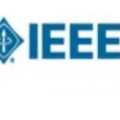In the last decade, the Internet of Things paradigm has caused an exponential increase in the number of connected devices. This trend brings the Internet closer to everyday activities and enables data collection that can be used to create and improve a great variety of services and applications. Despite its great benefits, this paradigm also comes with several challenges. More powerful storage and processing capabilities are required to service all these devices. Additionally, the need to deploy and manage the infrastructure to efficiently support these resources continues to pose a challenge. Modeling and simulation can help to design and analyze these scenarios, providing flexible and powerful mechanisms to study and compare different strategies and infrastructures. In this scenario, Micro Data Centers (MDCs) can be used as an effective way of reducing overwhelmed Cloud Data Center infrastructures. This paper explores an M\&S methodology to study the overall power consumption of a healthcare IoT scenario. The patients wear non-intrusive monitoring devices that periodically generate tasks to be executed in MDCs. We extract the layout of existing urban infrastructures, simulate the monitored population's behavior, and compare the power consumption of several data center configurations.
翻译:在过去十年中, " 物联网 " 模式导致连通装置数量的指数性增加,这一趋势使因特网更接近日常活动,使数据收集能够用来创造和改进各种各样的服务和应用。尽管这一模式带来巨大的好处,但也有若干挑战。需要更强大的储存和处理能力来为所有这些装置提供服务。此外,需要部署和管理基础设施以有效支持这些资源,这仍然是一项挑战。建模和模拟有助于设计和分析这些假设,提供灵活和强大的机制来研究和比较不同的战略和基础设施。在这种情况下,微型数据中心(MDC)可以被用作减少过多的云数据中心基础设施的有效方法。本文探讨了研究IOT保健情景的总体能量消耗的MZZS方法。病人佩戴非侵入性监测装置,定期在MDC产生任务。我们抽取现有城市基础设施的布局,模拟监测的人口行为,比较若干数据中心配置的能量消耗情况。





